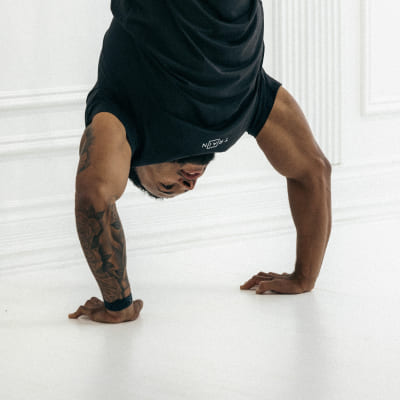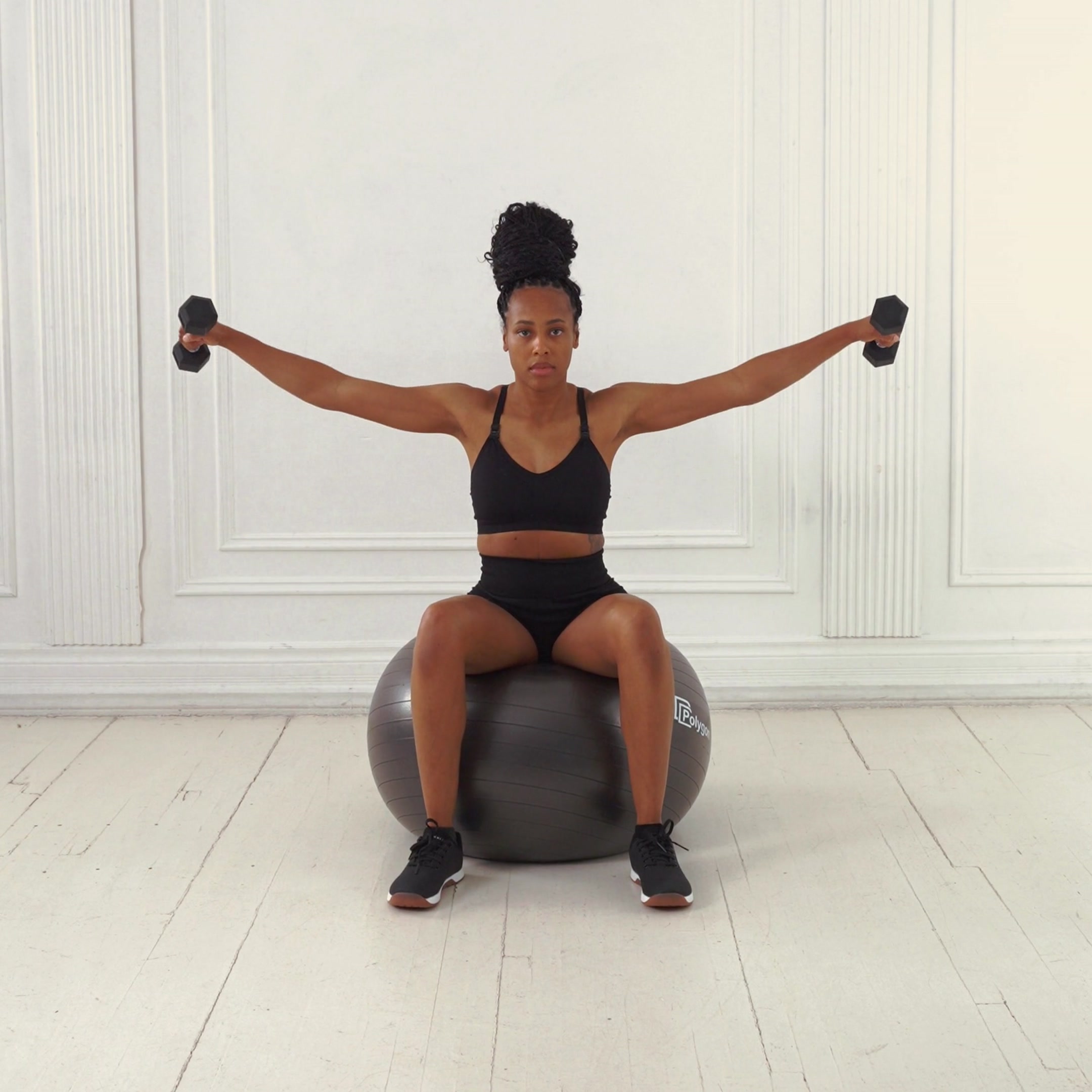
Video Coming Soon
We're working on adding video demonstrations for this exercise.
Dumbbell Prone Shoulder Raise (on Stability Ball)
An isolation exercise on a stability ball using light dumbbells to target rear deltoids, rhomboids, and mid trapezius for shoulder stability and posture improvement; emphasizes upper back activation with core engagement.
About Exercise
Equipment
Dumbbells, Stability Ball
Difficulty
3/5 • Intermediate
Primary Muscle Groups
Shoulders, Traps
Secondary Muscles
Lower Back
Popularity Score
5
Goals
Training Style
Setup Requirements
Requires Rack
No
Requires Bench
No
Requires Spotter
No
Space Needed
Small
Noise Level
Low
Muscle Breakdown
View Muscle MapShoulders
10/10Rear Delts
Traps
9/10Mid Traps
Lats
7/10Shoulders
6/10Medial Delts
Lower Back
4/10Erector Spinae
Programming
Typical Rep Range
10-15 reps
Rest Between Sets
60-90 seconds
How to Perform
Lie prone on a stability ball with abdomen and hips supported, legs extended back for stability, holding light dumbbells in each hand with arms hanging down and neutral grip.
- Brace core and glutes to stabilize on the ball.
- Squeeze shoulder blades together and raise arms with slight elbow bend to shoulder height.
- Keep neck neutral and gaze down.
- Pause briefly at the top, focusing on upper back contraction.
- Lower dumbbells slowly back to start without momentum.
- Repeat for reps while maintaining body stability.
Coaching Tips
Form Cues
- Squeeze blades together
- Elbows slightly bent
- Core tight on ball
- Thumbs up at top
- Controlled descent
- Neutral neck
Breathing
Inhale as you lower the dumbbells, exhale as you raise them; brace core throughout.
Tempo
2-1-2
Range of Motion
Raise arms until parallel to floor or slightly higher without shrugging; full extension at bottom with arms hanging straight.
Safety
Safety Notes
- Use very light weights to prioritize form
- Ensure ball size fits your height
- Brace core to protect lower back
- Stop if shoulder or back pain occurs
- Keep feet braced for balance
- Avoid if acute shoulder instability
Spotting
Not typically required due to light weights; self-spot with safeties or perform bodyweight version first.
Common Mistakes
- Using momentum to swing weights
- Arching lower back
- Shrugging shoulders
- Letting head lift
- Poor ball stability
- Heavy weights compromising form
When to Avoid
- Acute shoulder impingement
- Lower back pain
- Poor core stability
- Recent shoulder surgery
Flexibility Needed
- Adequate shoulder flexion and extension
- Ankle dorsiflexion for leg bracing
Build Up First
- Basic core engagement competency
- Familiarity with prone positions
- Shoulder stability basics
Also known as
Prone Rear Delt Raise on Ball, Stability Ball Prone Y Raise, Prone T Raise with Dumbbells
Found this helpful?
Share your thoughts or help us improve this guide.
Similar Exercises

Dumbbell Lateral Raise on Stability Ball
Dumbbells, Stability Ball
Shoulders

Dumbbell Prone Shoulder Press
Dumbbells, Stability Ball
Shoulders

Stability Ball Seated Dumbbell Shoulder Press
Dumbbells, Stability Ball
Shoulders, Triceps

Dumbbell Shrug on Stability Ball
Dumbbells, Stability Ball
Traps
Dumbbell Kneeling Lateral Raise on Stability Ball
Dumbbells, Stability Ball
Shoulders
Dumbbell Prone Y Raise
Dumbbells, Incline Bench
Traps, Shoulders

Dumbbell Chest Supported Row on Stability Ball
Dumbbells, Stability Ball
Lats, Traps

Resistance Band Shoulder Press on Stability Ball
Bands, Stability Ball
Shoulders
Dumbbell Prone Y-T-W Raise
Dumbbells, Incline Bench
Traps, Shoulders
Dumbbell 3-Way Shoulder Raise
Dumbbells
Shoulders


subscribe to our newsletter
Contact Us
hello@trainfitness.aiFind Us
130 Spadina Avenue, Toronto,
Ontario, M5V 0H4, Canada
©2025 All Rights Reserved
